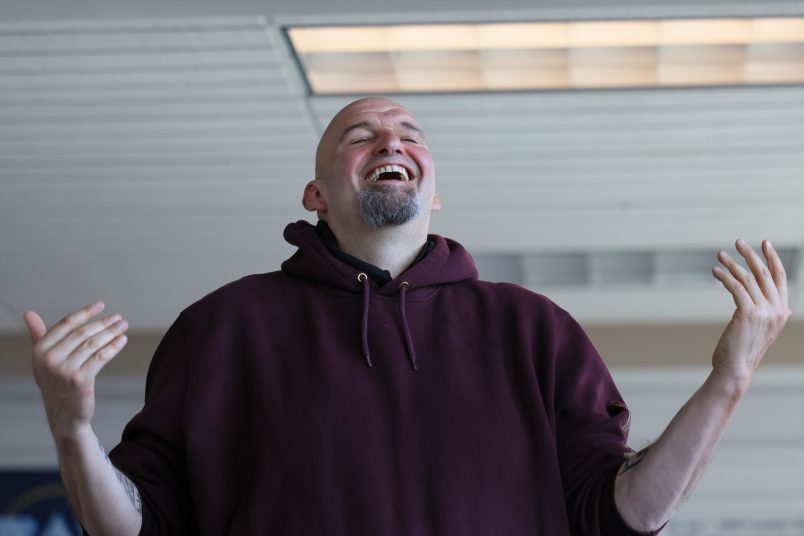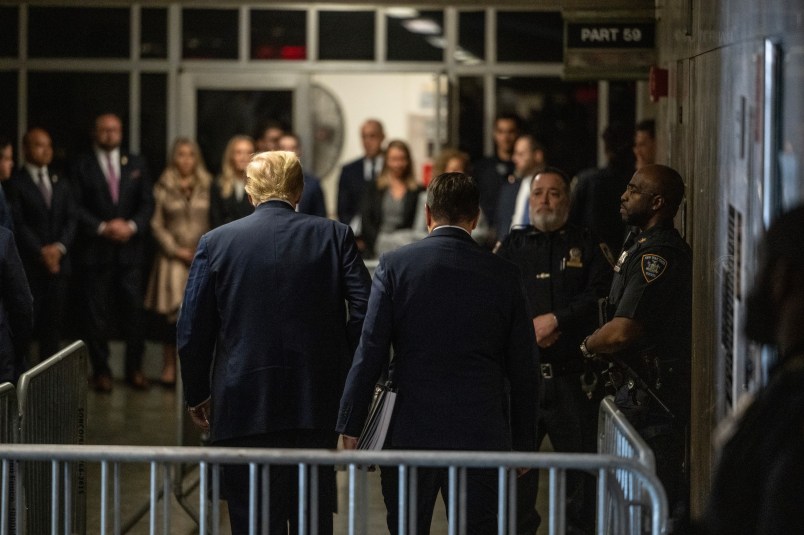Remember Khidhir Hamza? He was a rather famous figure in Washington a year ago. He was âSaddamâs Bombmakerâ according to a book he co-wrote a few years back.
Hamza was the originator — or at least the prime proponent — of the theory that Saddam was enriching uranium through a highly unorthodox but devilishly concealable method — with very small uranium enrichment facilities scattered and hidden throughout the country.
Hereâs a graf from an article by Eli Lake last year in The New Republic â¦
Shortly after Wolfowitz took his post in February 2001, for example, Chalabi and Brooke brought 1994 defector Khidir Hamza, one of Saddam’s most senior nuclear scientists, to meet the new deputy defense secretary. In the meeting, Hamza described how Saddam was trying to refine uranium for his nuclear program using a centrifuge technique in small labs scattered throughout the country. Initially, there had been skepticism within the intelligence community–and specifically the CIA–that Saddam could be refining uranium in this way. But Hamza was insistent, claiming that Baghdad was purchasing from abroad a specific kind of aluminum tube needed for the process. And ultimately, Hamza’s intelligence seems to have been borne out. Just last week, The New York Times published an article reporting that “$(i$)n the last 14 months, Iraq has sought to buy thousands of specially designed aluminum tubes, which American officials believe were intended as components of centrifuges to enrich uranium.”
People who actually make nuclear weapons never thought too highly of Hamzaâs story (and that probably should have been a bit more of a warning sign). But, as <$Ad$>Lake implied, many at the CIA eventually came around.
Whether or not Saddam had procured yellowcake from Niger didnât matter so much, reasoned many Iraq hawks, since he could just mine his own. Richard Perle told me in April of last year, for instance, that Saddam had already been âenriching the natural uranium thatâs found in Iraq for some time.â
Not everyone bought Hamzaâs story. Late last year, according to the Times of London, former weapons inspectors and proliferation specialist David Albright said Hamza’s claims were âoften inaccurate . . . He sculpts his message to get the message across . . . (He) wants regime change (in Iraq) and what interferes with that is just ignored.” Many, however, found Hamzaâs claim both compelling and chilling.
Hereâs what Ken Pollack said about Hamza when TPM interviewed him in January of this year â¦
I will say flat out [that] I was under the same impression: that we had a very good grip on their nuclear program and there really wasn’t much of a nuclear program well into the 1990s. I was constantly being assured that by the IAEA and by the intelligence community. And then all of a sudden we had a slew of defectors come out in the mid- and late 1990s and what they told us was that everything that we had thought was wrong. You know Khidhir Hamza is the only one who’s gone public. So he’s the only one I can really talk about. But in 1994 we really thought the IAEA had eradicated their nuclear program. And the IAEA really thought that they’d eradicated their nuclear program. And they were telling us they’d eradicated their nuclear program. And Khidhir Hamza comes out and says ‘No, the nuclear program in 1994 was bigger than it had ever been before.’
The problem is that Hamzaâs story now seems almost certain to have been false. Now, people get things wrong for many reasons. But given the minute detail of the highly unconventional methods Hamza alleged were being used and his own self-described central role in Saddamâs nuclear weapons program, itâs really hard to see how Hamza could have seen and done the things he told us he saw and did.
Really hard.
As I said above, in the couple years leading up to the Iraq War, Hamza was ubiquitous. And his story was endlessly mentioned. I saw him speak at a panel at the Council of Foreign Relations here in DC in the spring of 2002. And when I went up to try to ask him a few questions afterwards there were so many other folks trying to do the same that after a few pleasantries I got whisked aside to chat with his publicist.
Recently, heâs been a bit hard to come by. In fact, I did a nexis search on his name and I only got a couple dozen hits since the invasion last March.
I had figured that Hamza had just dropped off the radar screen — which would be sort of understandable, given what Iâve noted above. But a memo prepared by a US government official after two stints working in post-war Iraq suggests that Hamza is still working with the US occupation authorities in Iraq, specifically in the new Ministry of Science and Technology. And the memo, written in late October, says Hamza will be coming to Washington in November.
So where is Khidhir Hamza? Whatâs his explanation? And if he doesnât have a good one, why are we still working with him?








